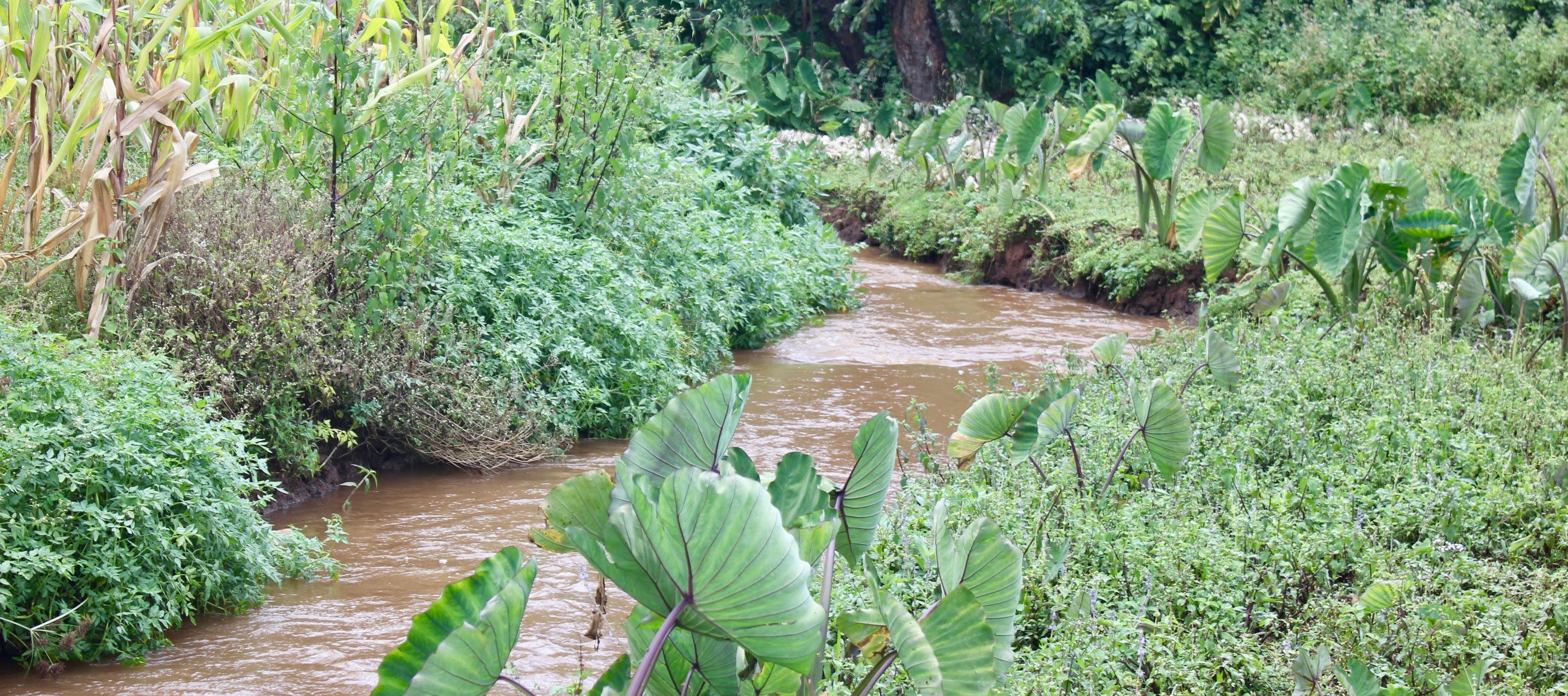
Riverbank protection, Mt Elgon, Uganda
Re-vegetation measures to protect riverbanks in Kapchorwa district, Mt. Elgon, Uganda
Implementing the Scaling up Mountain EbA project in Mount Elgon, Uganda includes river bank protection measures. In the Kapchorwa district, stakeholders decided to protect banks of the Cheborenet River with a target of rehabilitating 10km of the river buffer through an EbA measure of re-vegetation.Through a participatory process, community members within the Chema Subcounty, part of the Sipi-Chebonet micro catchment, agreed on leaving 6 meters as river buffer zone, where crop cultivation ceases, thereby allowing natural vegetation to recover. The main objective of this measure is to improve water quality. Water pollution is a significant problem for the local people as they depend on the river for drinking water, irrigation and livestock. In the rainy season, torrential rains wash agricultural chemicals into the river. Having natural vegetation on riverbanks helps remove sediments and pollutants from the surface and from groundwater. In this sense, the river buffer zone’s vegetation serves as a sieve and filter for the run off before it enters the river.
Leaving a river buffer zone is not only beneficial for water quality, but also creates an opportunity for local people to collect herbs and medicinal plants from the regenerated vegetation. In the long run, this measure will also help reduce floods due to heavy rain, as well as the diseases associated with flooding such as malaria, cholera and dysentery.
The process for revegetation starts with a demarcation trench to mark the buffer zone limit. Members of the micro catchment management committee worked laying out the trench, while landowners and their families participated in the process and supervised the exercise. Link back to main Mt EbA-Uganda page.